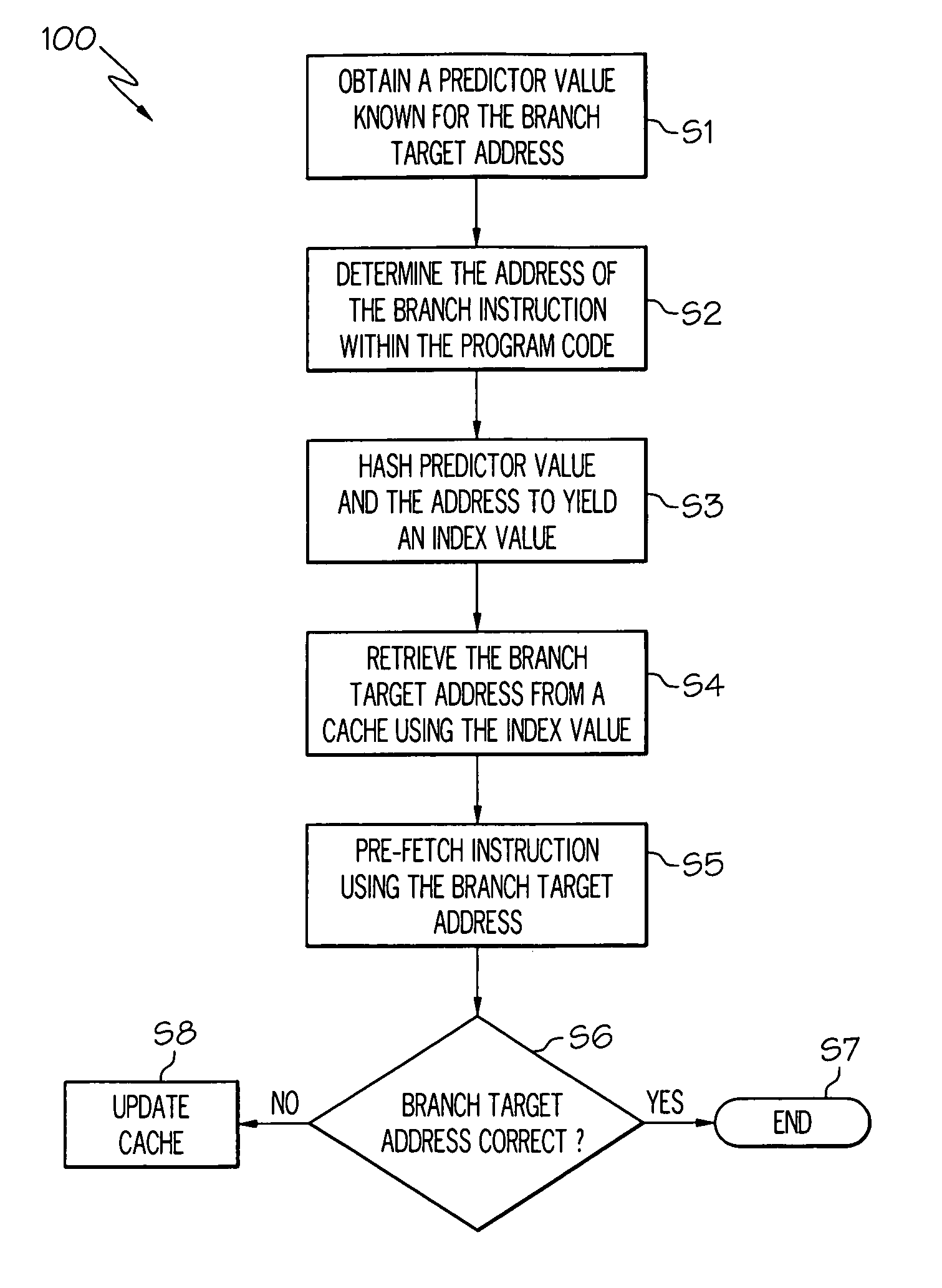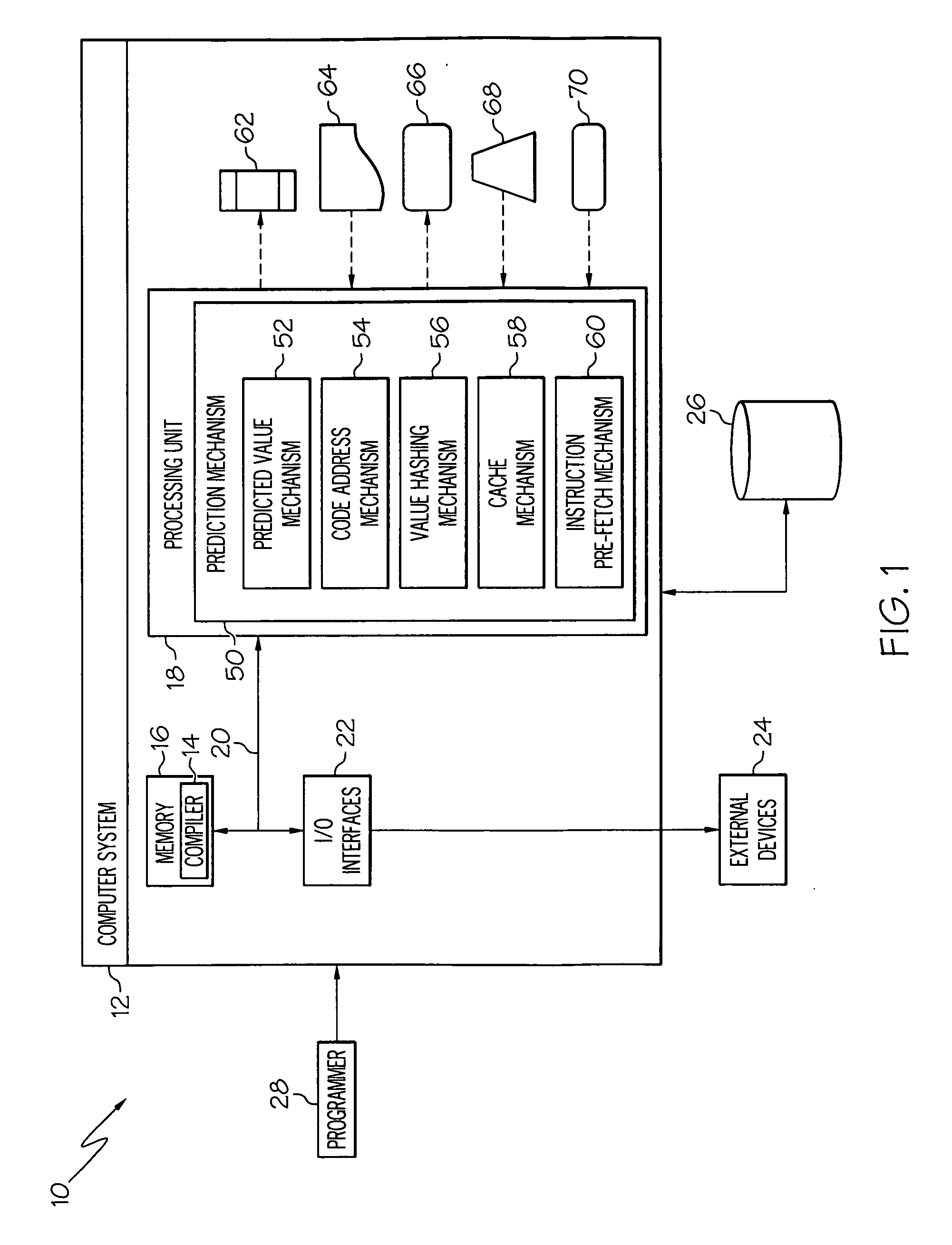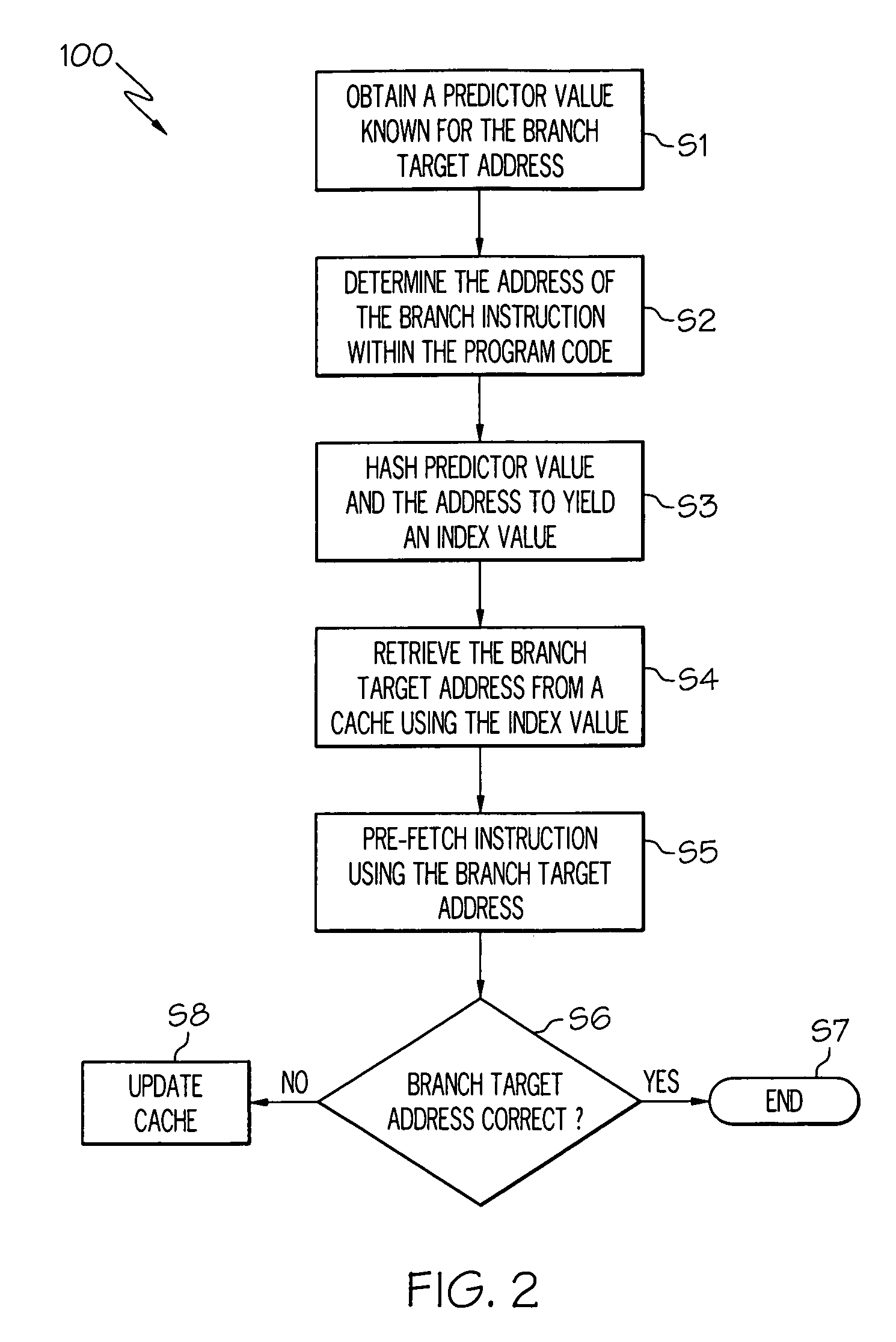Computer-implemented method and processing unit for predicting branch target addresses
a computer implementation and target address technology, applied in the field of instruction address prediction, can solve the problems of poorly designed branch prediction mechanisms, instructions, and not working well in general for switches and (truly) polymorphic calls, and achieve the effect of enhancing the prediction of correct target addresses
- Summary
- Abstract
- Description
- Claims
- Application Information
AI Technical Summary
Benefits of technology
Problems solved by technology
Method used
Image
Examples
Embodiment Construction
[0017] For convenience purposes the Detailed Description of the Invention will have the following sections: [0018] I. General Description [0019] II. Typical Embodiment [0020] III. Computerized Implementation
I. General Description
[0021] As indicated above, the present invention relates to a computer-implemented method and processing unit for predicting branch target addresses. Specifically, under the present invention, a branch target address corresponding to a target instruction to be pre-fetched is predicted based on two values. The first value is a “predictor value” that is known for the branch target address. The second value is the address of the branch instruction the target of which is being predicted. Once these two values are provided, they can be combined (e.g., hashed) to yield an index value, which is used to obtain a predicted branch target address from a cache. This technique is generally implemented for branch instructions that are used to implement switch statement...
PUM
 Login to View More
Login to View More Abstract
Description
Claims
Application Information
 Login to View More
Login to View More - R&D
- Intellectual Property
- Life Sciences
- Materials
- Tech Scout
- Unparalleled Data Quality
- Higher Quality Content
- 60% Fewer Hallucinations
Browse by: Latest US Patents, China's latest patents, Technical Efficacy Thesaurus, Application Domain, Technology Topic, Popular Technical Reports.
© 2025 PatSnap. All rights reserved.Legal|Privacy policy|Modern Slavery Act Transparency Statement|Sitemap|About US| Contact US: help@patsnap.com



